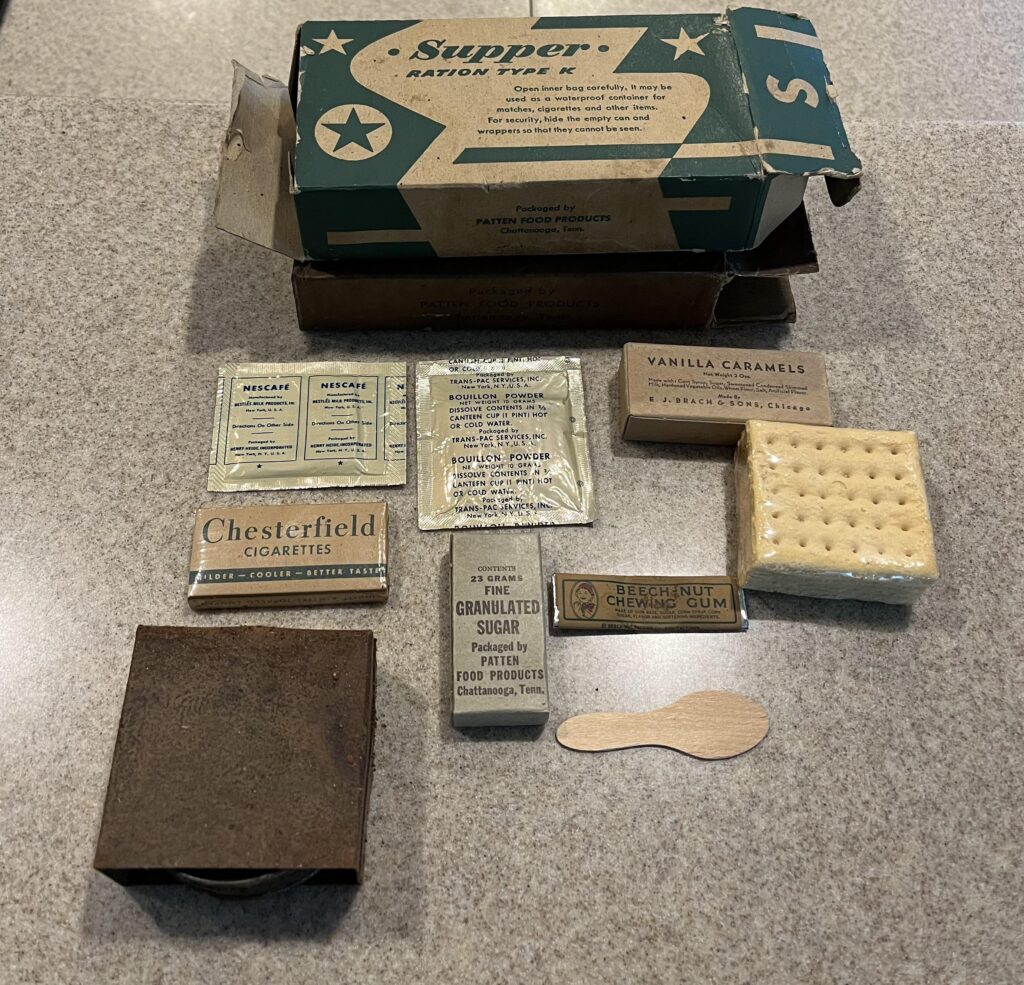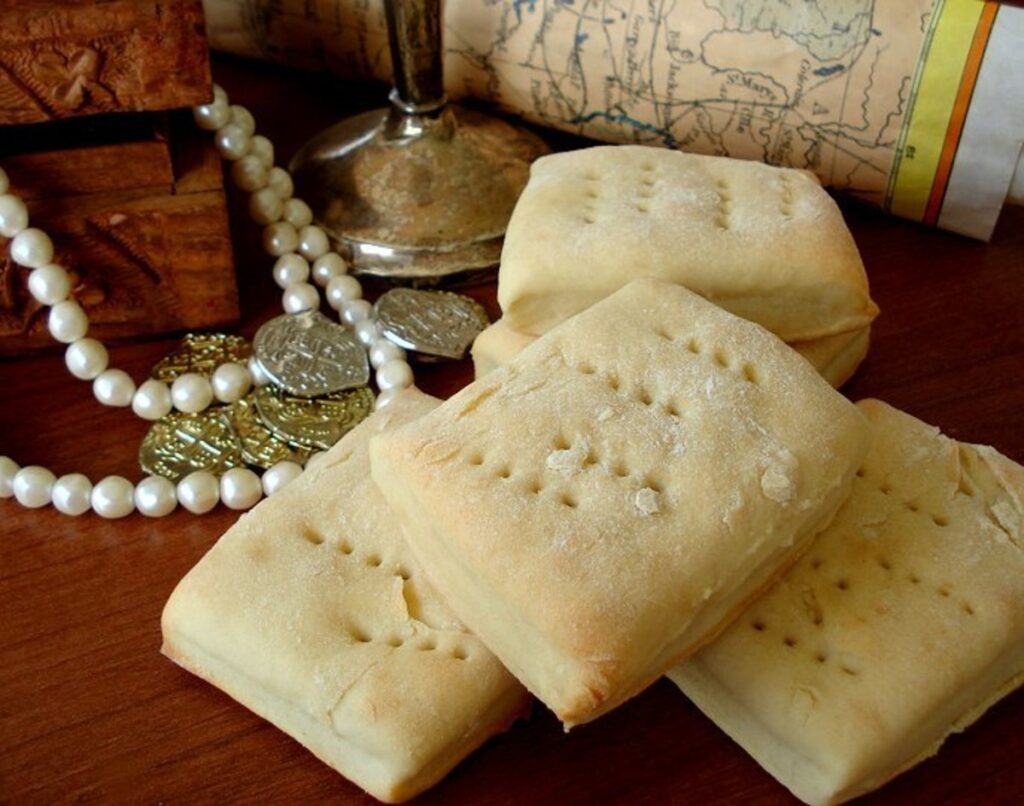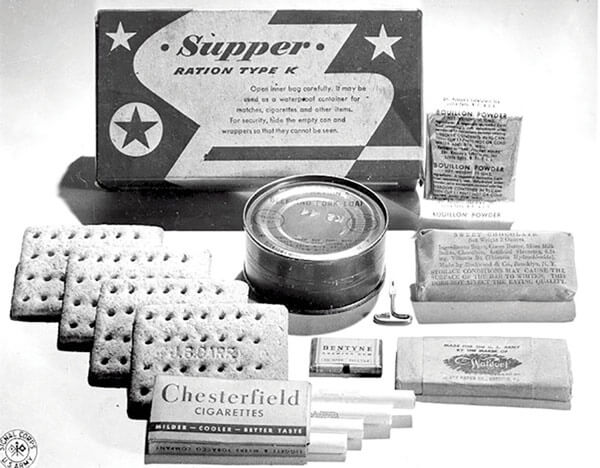
MREs of World War II – Ration: Type K.
During Memorial Day weekend, most televised American sports featured some sort of tribute to the troops, showcasing the troops at their military bases, enjoying the ball game while chowing down their meals. While most Americans were off to the races this grilling season, buying up grilling accessories and tons of food, most troops stationed on military bases are being treated to some hot chow. We’ve come a long way when enlisted men and women were commonly served canned pork fat and beans – or food so densely preserved, biting into them would loosen your teeth.
Not only has military food improved throughout the years, in terms of preservation but in taste as well, up to a point where they have inspired cuisines around the world and some of them have become icons in their own right. Some military food recipes have been tinkered with to help improve on their flavor and some have taken on a life of their own. We take a look back at what’s been cooking in the kitchen all these years.

Hardtack
One of the most common meals for soldiers during the American Civil War was a food that resembled a cracker called a hardtack. The hardtack is made up of flour, water, and salt. Hardtack was widely known for its three simple ingredients and longevity; they really lasted a long time – the Civil War Museum at Manassas National Battlefield Park currently has a hardtack on display dating back from the Civil War! Soldiers hated eating hardtack, they often referred to them as “sheet iron crackers” or “tooth duller.”
Whenever they would get wet, mold would grow inside them on the boxes supplied to the Army. At times, Insects would lay their eggs in them giving them the nickname, “worm castles.” Hardtack was an important meal for the men and critical to their diet, it provided them the energy they required – so most soldiers tried to discover different methods of making them in the hopes of eating them.

Spam
Spam is the square-shaped meat made up of pork, water, salt, potato starch, sugar, and sodium nitrate. Since the Hormel Corporation released the canned good in 1937, billions of cans have been sold – it’s available in countries throughout the world. Spam is sometimes the subject of some urban legends, like the myth that the name Spam is actually an acronym for “Scientifically Processed Animal Matter.”
The town of Austin, Minnesota is home to a street called Spam Boulevard. The town of Austin became known as “Spamtown, USA” when George A. Hormel founded his slaughterhouse and meatpacking facility there in 1891, after years of working in Chicago slaughterhouses.
The brand didn’t gain attraction until World War II, when the U.S. military purchased a variety of canned meats to feed the troops overseas – not all canned goods were from Hormel’s Spam brand. Hormel’s figures that at least 100 million pounds of Spam was shipped to both American and Allied soldiers overseas.

MRE (Meal Ready to Eat)
The creation of one of the most familiar rations to most U.S. soldiers is: The Meal, Ready to Eat, or MRE. MREs are the most influential developments to feeding soldiers that originated in the late 1970s and early 1980s. The U.S. military was able to develop rations that were lighter, flexible, and secure in a variety of harsh environments and was actually delicious.
The main components towards the creation of the MRE was the developments of the retort pouch, a flat package made of plastic laminate and metal foils that could be filled with food, which in turn could seal and boiled to sterilize it to make it stable. Because the packaging is thin and flat, it could be sterilized much quicker than metal cans, which also helped maintain the quality of the food and to also make it taste better. You’re possibly familiar with MREs if you’ve ever bought similar items at grocery stores stocked with prepared meals and soups of the like.
We’ve come a long way from the days of hard teeth-breaking foods to some hot and delicious foods, which in turn have inspired some civilian cuisines. Gone are the days when enlisted men and women were forced to consume sustenance that was labeled as food, for the sake of quelling a growling stomach.








